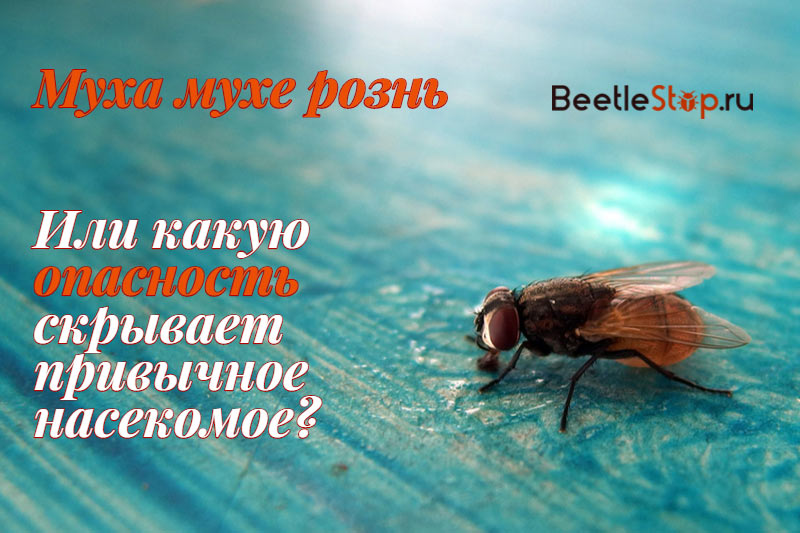Why flies are dangerous for people and animals?
A fly is one of the most widespread and annoying insects, which is capable of endlessly annoying a person with its presence. However, this is not their only negative feature. Due to the nature of their existence, these parasites can cause serious harm to human health. So what are flies dangerous?

Harm from flies
At first glance, a fly can seem like a very harmless creature that just flies around a room without any purpose. But in fact, the harm from both adults and their larvae is quite large.
Meat flies
Meat flies known for trying to make a laying without fail in fish or meat. Most often, the accumulation and reproduction of these parasites occurs in places of open sale of these products or when stored in air.
The main danger from a meat fly is epidemiological. Moreover, these insects are capable of transmitting viral, and parasitic, and bacterial diseases, and the most common are intestinal diseases. Infection occurs as follows: flies come in contact with contaminated surfaces, after which they come into contact with food and household items. Thus, both humans and animals are threatened.
On a note! Being in countries where the climate is mostly warm and humid, meat flies often cause serious damage to the fishing industry, and sometimes provoke the death of newly born lambs - the larvae penetrate the skin of animals and gradually eat away the tissues, which subsequently leads to rotting of the coat and the development of fungal diseases!
Lighter
Lighter flies are active blood-sucking insects that live mainly where there are domestic animals, in particular cattle. Getting into living quarters, these parasites often bite people.
This pest can be recognized by the characteristic gray color of the chitinous cover. On the abdomen there are clearly distinguishable dark stripes, on the back there are dark spots. Her oral apparatus is represented by a very elongated proboscis with chitinous “teeth” at the end. It is to them that the flask scrapes the epidermis and thereby causes severe irritation and, eating blood, injects a poisonous secret into the wound.
A lighter fly is able to tolerate diseases such as:
- anthrax;
- sepsis;
- tularemia;
- staph infection.
These insects infect humans and animals as follows: after contact with a sick individual, they fly to the next victim and inject infected saliva into the wound.
House flies
The most common indoor flies for us do not bite, but at the same time they are also very dangerous for humans. Than? Judge for yourself:
- their body and legs are covered with small villi, to which not only dirt and dust constantly adhere, but also numerous pathogens:
- insects carry them on themselves and infect the food products that we left on the tables;
- while in one kilogram of food products there may be 7 thousand larvae of this parasite!
On a note! On the body of one housefly there are usually about 6 million pathogens, and in its intestines more than 25 million!
Such an insect can become a pathogen:
- intestinal infections;
- tuberculosis
- eye diseases;
- eggs of worms;
- intestinal and tissue miases.
The most dangerous flies
The Tsetse fly is considered the most dangerous in the world and it lives in tropical and subtropical regions of Africa. Many types of adult parasites carry trypanosomes that cause sleeping sickness in humans and Nagan disease in domestic animals.
As for harm to people, after a bite of this insect, immunity first suffers, and after the nervous system. A swelling occurs at the site of the bite. A person becomes lethargic, sleepy and lethargic. The development of the disease lasts about several months and without proper treatment, the patient falls into a coma, and then dies.
After we managed to find out what flies are dangerous for humans, it becomes clear that the fight against them is really necessary. For this, first of all, it is necessary to observe simple sanitary and hygienic rules, and with a large accumulation of insects it is advisable to use traps and insecticides.

